-
 bitcoin
bitcoin $122025.899241 USD
-2.12% -
 ethereum
ethereum $4488.068729 USD
-4.11% -
 bnb
bnb $1315.348019 USD
8.65% -
 tether
tether $1.000457 USD
0.03% -
 xrp
xrp $2.875326 USD
-3.69% -
 solana
solana $222.043604 USD
-4.07% -
 usd-coin
usd-coin $0.999682 USD
0.00% -
 dogecoin
dogecoin $0.249887 USD
-5.62% -
 tron
tron $0.337379 USD
-2.59% -
 cardano
cardano $0.827763 USD
-5.06% -
 hyperliquid
hyperliquid $45.774531 USD
-2.43% -
 chainlink
chainlink $22.079309 USD
-5.87% -
 ethena-usde
ethena-usde $1.000156 USD
0.02% -
 sui
sui $3.482566 USD
-3.57% -
 stellar
stellar $0.386982 USD
-4.92%
What is "impermanent loss" in DeFi?
Impermanent loss (IL) in DeFi, a potential loss from price fluctuations in liquidity pools, only realizes upon withdrawal. Mitigating strategies exist, but understanding IL is crucial for informed DeFi participation.
Mar 13, 2025 at 10:26 pm
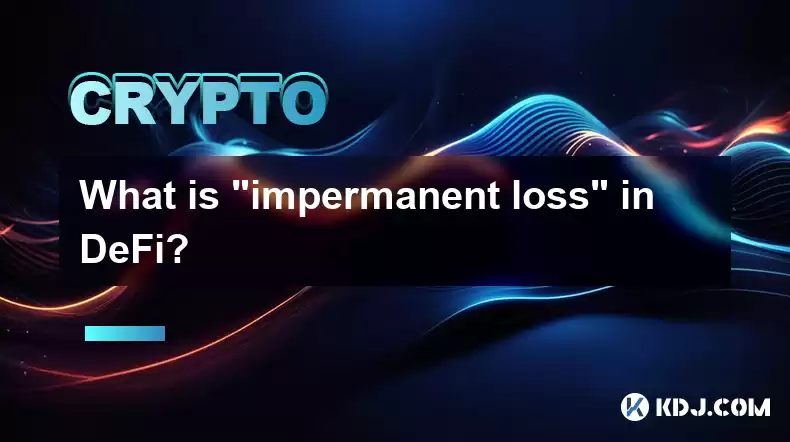
- Impermanent loss (IL) is a risk unique to decentralized finance (DeFi) liquidity provision.
- It arises from price fluctuations between the two assets in a liquidity pool.
- IL is not a realized loss until liquidity is withdrawn.
- Strategies exist to mitigate IL, but it's a fundamental risk to consider.
- Understanding IL is crucial for making informed decisions in DeFi.
Impermanent loss (IL) is a unique risk associated with providing liquidity in decentralized finance (DeFi) protocols. Unlike traditional investments where losses are immediately realized, IL is a potential loss that only materializes when a liquidity provider (LP) withdraws their assets from a liquidity pool. The core of IL stems from the price fluctuations of the two assets within the pool.
How Does Impermanent Loss Occur?Imagine a liquidity pool containing two cryptocurrencies, Token A and Token B. You deposit an equal value of both tokens into the pool. The protocol maintains a constant product formula (e.g., x * y = k), ensuring a balanced ratio of assets. If the price of Token A increases significantly relative to Token B, the protocol will automatically rebalance the pool, selling some of Token A and buying more of Token B to maintain the constant product. When you withdraw your liquidity, you'll receive a slightly smaller amount of Token A and a larger amount of Token B compared to what you initially deposited. This difference represents the impermanent loss. The loss is "impermanent" because if the prices return to their original ratio at the time of withdrawal, the loss disappears.
Calculating Impermanent Loss:Calculating the exact amount of IL requires considering the initial and final prices of the assets and the initial investment. Several online calculators are available to help with this complex calculation. These calculators typically take the initial investment ratio and the price change ratio as input to determine the extent of impermanent loss. The formula itself involves square roots and is not easily calculated manually.
Mitigating Impermanent Loss:While you can't completely eliminate IL, you can take steps to mitigate its impact:
- Choose less volatile asset pairs: Liquidity pools with assets that have relatively stable price movements are less susceptible to significant IL.
- Longer time horizons: IL is often less significant over longer periods, particularly if the prices eventually revert.
- High APY: High annual percentage yields (APY) can offset some or all of the IL. However, this depends on the magnitude of the APY compared to the IL incurred.
- Diversification: Spreading your liquidity provision across multiple pools can reduce the overall risk.
It's crucial to understand the difference between impermanent and realized loss. Impermanent loss is a potential loss that only becomes realized when you withdraw your liquidity from the pool. If you leave your assets in the pool and the prices return to their initial ratio, the impermanent loss disappears. However, if you withdraw and the prices have moved significantly against you, the loss becomes realized.
Factors Affecting Impermanent Loss:Several factors influence the extent of impermanent loss:
- Price volatility: Higher volatility generally leads to greater IL. The more the prices fluctuate, the more rebalancing the protocol will perform, potentially resulting in a larger loss.
- Time in the pool: The longer your liquidity is locked, the greater the potential for price fluctuations and thus, the potential for higher IL.
- Initial asset ratio: The initial ratio of assets deposited also plays a role.
Despite the risk of impermanent loss, several strategies can help maximize overall returns:
- Yield farming: Participating in yield farming programs that offer high APYs can potentially offset IL.
- Staking: Staking your tokens can provide a consistent return while avoiding IL entirely.
- Careful pool selection: Selecting pools with assets that are expected to maintain relative price stability minimizes IL risk.
A: No, impermanent loss is only a loss if you withdraw your liquidity before the prices of the assets return to their initial ratio. If the prices revert, the "loss" disappears.
Q: Can I avoid impermanent loss completely?A: While you can't completely avoid it, you can minimize the risk by selecting less volatile asset pairs and holding your liquidity for longer periods, hoping for price reversion.
Q: How do I calculate my impermanent loss?A: You can use online calculators that take the initial investment ratio and the price changes as inputs. These calculators utilize the constant product formula to determine the extent of the loss.
Q: What are the best strategies to mitigate impermanent loss?A: Strategies include choosing less volatile assets, considering longer time horizons, seeking high APYs to offset potential losses, and diversifying across multiple pools.
Q: Is impermanent loss a significant risk in DeFi?A: Yes, it's a fundamental risk to consider when providing liquidity in DeFi. Understanding IL and its potential impact is crucial for making informed decisions.
Disclaimer:info@kdj.com
The information provided is not trading advice. kdj.com does not assume any responsibility for any investments made based on the information provided in this article. Cryptocurrencies are highly volatile and it is highly recommended that you invest with caution after thorough research!
If you believe that the content used on this website infringes your copyright, please contact us immediately (info@kdj.com) and we will delete it promptly.
- BlockDAG, DOGE, HYPE Sponsorship: Crypto Trends Shaping 2025
- 2025-10-01 00:25:13
- Deutsche Börse and Circle: A StableCoin Adoption Powerhouse in Europe
- 2025-10-01 00:25:13
- BlockDAG's Presale Buzz: Is It the Crypto to Watch in October 2025?
- 2025-10-01 00:30:13
- Bitcoin, Crypto, and IQ: When Genius Meets Digital Gold?
- 2025-10-01 00:30:13
- Stablecoins, American Innovation, and Wallet Tokens: The Next Frontier
- 2025-10-01 00:35:12
- NBU, Coins, and Crypto in Ukraine: A New Yorker's Take
- 2025-10-01 00:45:14
Related knowledge

How to track DeFi activity on a block explorer
Sep 04,2025 at 05:36pm
Bitcoin's Role in Decentralized Finance1. Bitcoin remains the cornerstone of the cryptocurrency ecosystem, serving as both a store of value and a benc...

What is the difference between DeFi and CeFi? An article analyzing the advantages and disadvantages of both
Jun 13,2025 at 03:57am
Understanding the Foundations of DeFi and CeFiTo fully grasp the difference between DeFi (Decentralized Finance) and CeFi (Centralized Finance), it’s ...
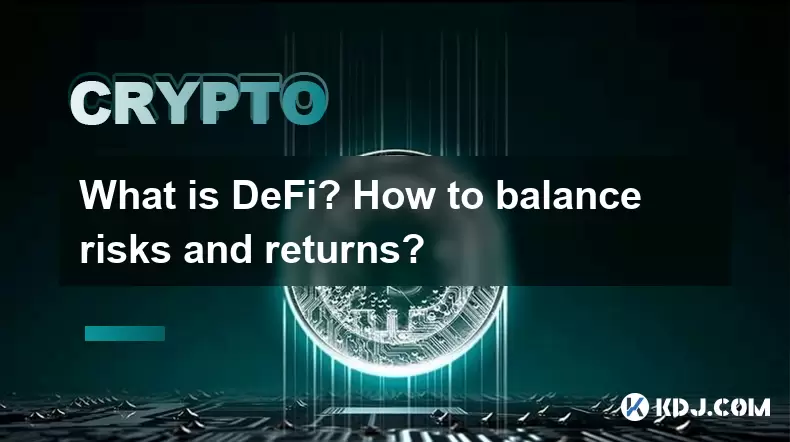
What is DeFi? How to balance risks and returns?
May 31,2025 at 12:22pm
What is DeFi? How to Balance Risks and Returns? Decentralized Finance, commonly known as DeFi, represents a revolutionary shift in the financial ecosy...
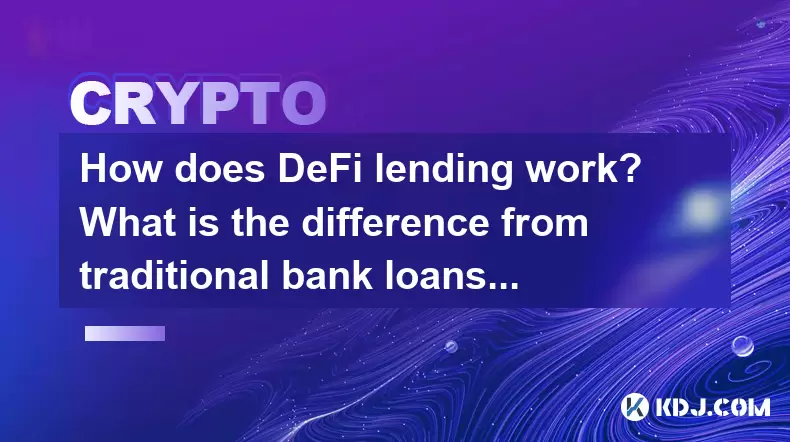
How does DeFi lending work? What is the difference from traditional bank loans?
May 29,2025 at 05:36pm
Introduction to DeFi LendingDeFi lending, or decentralized finance lending, represents a revolutionary shift in the way borrowing and lending are cond...
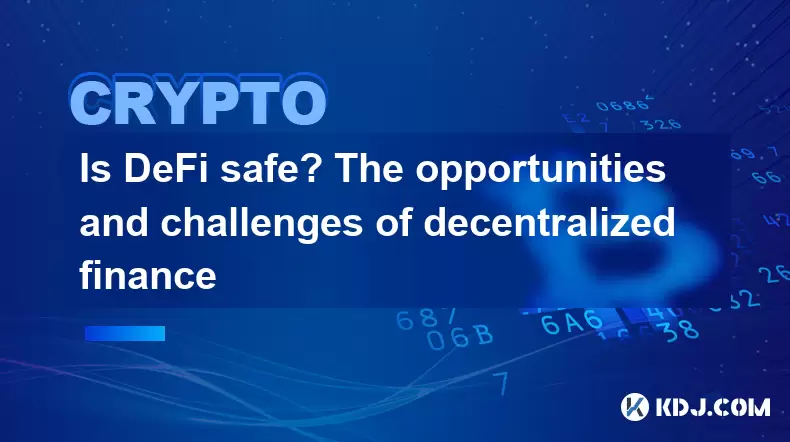
Is DeFi safe? The opportunities and challenges of decentralized finance
May 27,2025 at 02:28pm
Decentralized Finance, commonly known as DeFi, has revolutionized the financial landscape by offering a range of financial services without the need f...
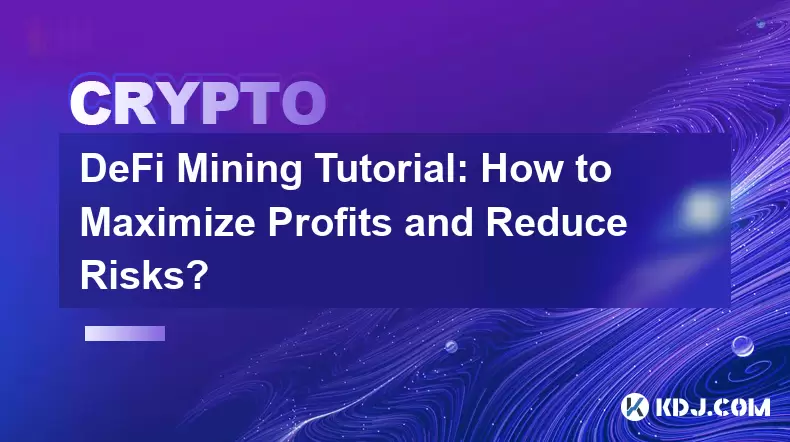
DeFi Mining Tutorial: How to Maximize Profits and Reduce Risks?
May 27,2025 at 07:42am
DeFi, or Decentralized Finance, has opened up a new world of opportunities for crypto enthusiasts looking to maximize their profits through various mi...

How to track DeFi activity on a block explorer
Sep 04,2025 at 05:36pm
Bitcoin's Role in Decentralized Finance1. Bitcoin remains the cornerstone of the cryptocurrency ecosystem, serving as both a store of value and a benc...

What is the difference between DeFi and CeFi? An article analyzing the advantages and disadvantages of both
Jun 13,2025 at 03:57am
Understanding the Foundations of DeFi and CeFiTo fully grasp the difference between DeFi (Decentralized Finance) and CeFi (Centralized Finance), it’s ...

What is DeFi? How to balance risks and returns?
May 31,2025 at 12:22pm
What is DeFi? How to Balance Risks and Returns? Decentralized Finance, commonly known as DeFi, represents a revolutionary shift in the financial ecosy...

How does DeFi lending work? What is the difference from traditional bank loans?
May 29,2025 at 05:36pm
Introduction to DeFi LendingDeFi lending, or decentralized finance lending, represents a revolutionary shift in the way borrowing and lending are cond...

Is DeFi safe? The opportunities and challenges of decentralized finance
May 27,2025 at 02:28pm
Decentralized Finance, commonly known as DeFi, has revolutionized the financial landscape by offering a range of financial services without the need f...

DeFi Mining Tutorial: How to Maximize Profits and Reduce Risks?
May 27,2025 at 07:42am
DeFi, or Decentralized Finance, has opened up a new world of opportunities for crypto enthusiasts looking to maximize their profits through various mi...
See all articles










































































